Making the Reservation
Architecture students head to Bluff, Utah, to build Earth-friendly homes for Navajo in need
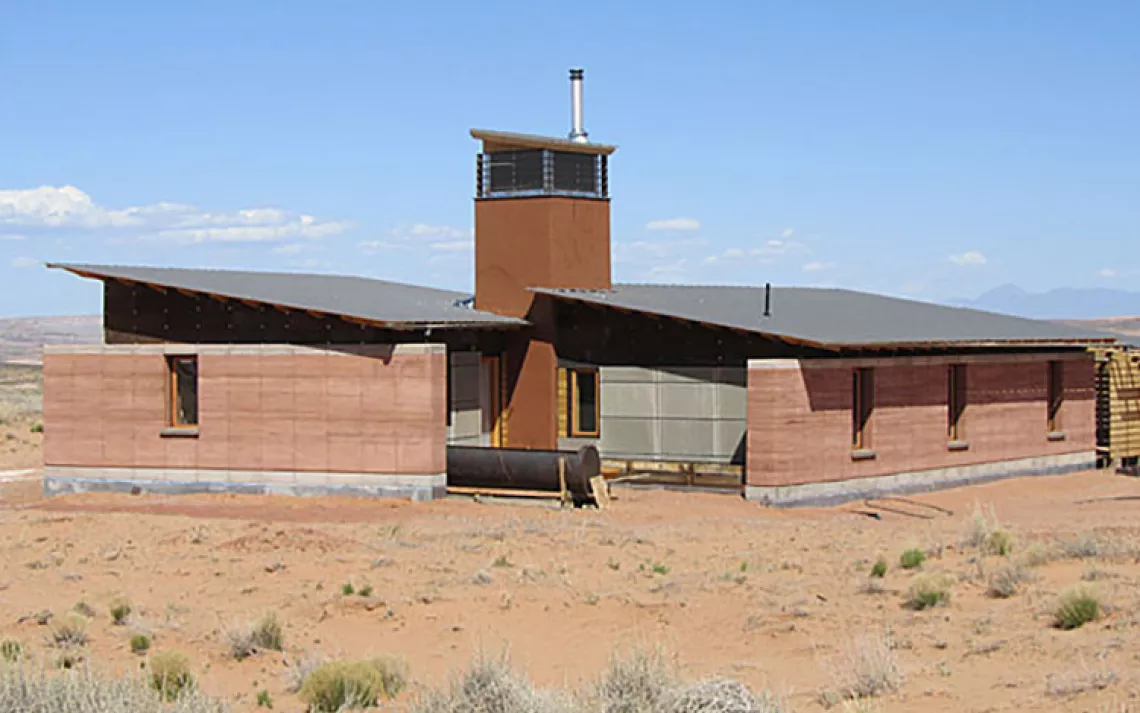
MAXINE BEGAY'S BRAND-NEW HOUSE SITS in southern Utah's high desert, surrounded by miles of red hills stubbled with yucca and creosote. The only man-made things in view are a few hundred yards up the dirt road: a plywood shack with some broken-down cars and miscellaneous trash cluttering its front yard.
Begay grew up in that shack, and a constantly shifting passel of her family members still live there. Her relatives settled in this remote corner of the Navajo Nation about 50 years ago, and none of them had ever seen a house like the two-bedroom place built in November for Begay and her 10-year-old son. The walls of the elegant single-story structure are made of compressed earth. It's got a rooftop rainwater-capturing system, insulation made from recycled blue jeans, and a fireplace chimney that converts into a breeze-catching funnel. And you can't beat the price: nada.

Intern Cindy Bithell with Hank Louis at the DesignBuildBluff compound
"Oh my god, I love it," said Begay, a stocky 40-year-old wearing jeans and a T-shirt, her long black hair in a ponytail. "I'm so amazed at what they did."
"They" are the 22 students from DesignBuildBluff, a program started through the University of Utah that brings architecture graduate students to the reservation to build sustainable homes for Navajo families in need. "People ask me if it's a philosophy or a program," said Hank Louis, the adjunct professor who founded DesignBuildBluff. "It's both."
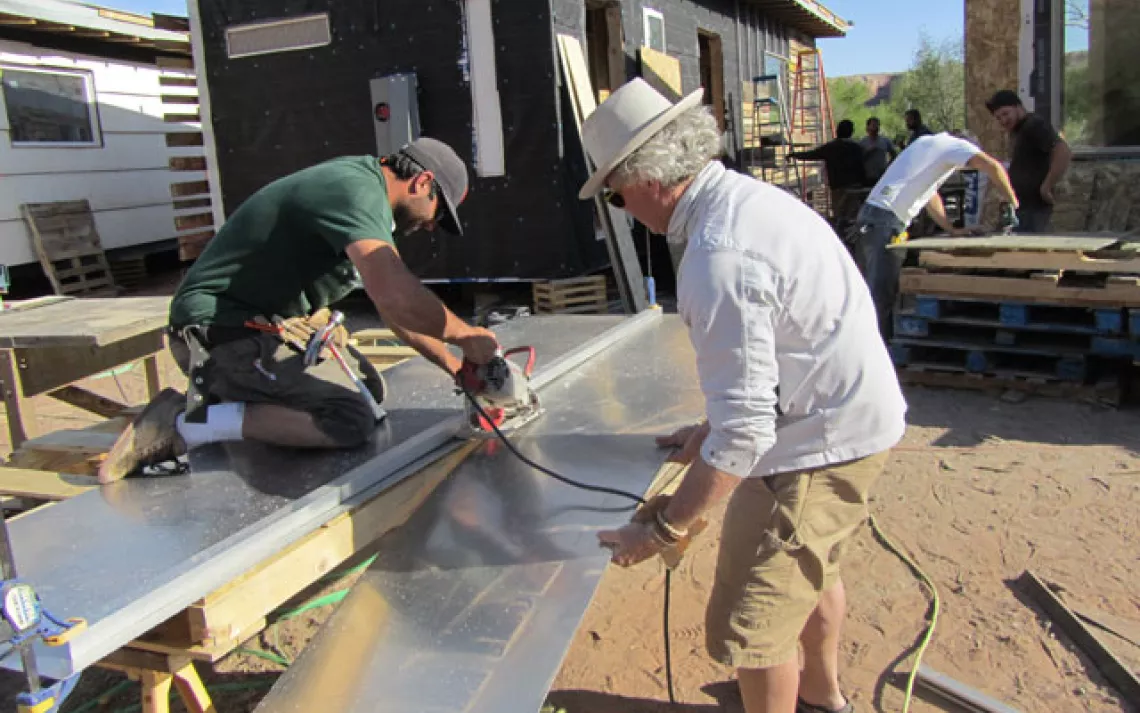
Louis helps a student cut a sheet of aluminum.
Louis, 60, is a laid-back, sturdily built man whose unruly thicket of wavy white hair, mustache, and white hat make him look like a desert Mark Twain. He's been interested in building houses since the 1970s, when he drifted down to Costa Rica, bought a small farm, and patched together an abode using trees from the surrounding forest.
He got the idea for DesignBuildBluff during a 1998 visit to the tiny town of Bluff on the vast Navajo Nation's northern edge. Louis was shocked at the conditions on the reservation; about half of its 180,000 residents live below the poverty line, according to the 2000 census, and many homes have no running water or electricity. "They're in as dire straits as any Third World country I've visited," he said.
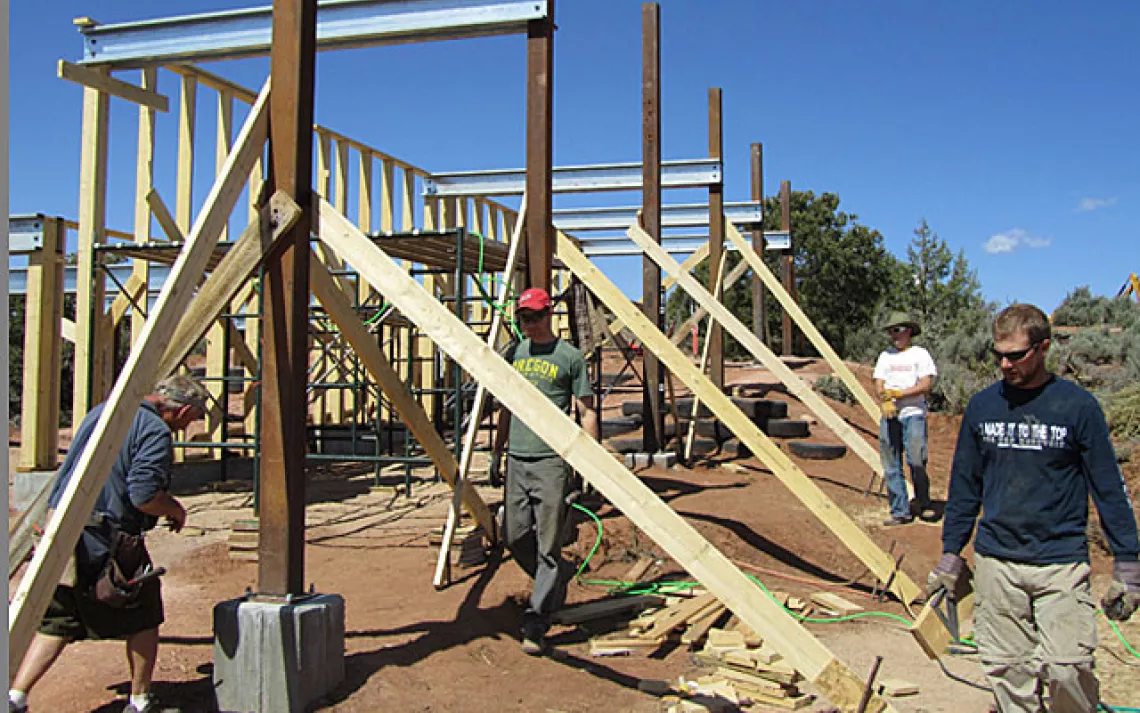
Students build a house for a family of six.
Inspired by Rural Studio, an Auburn University program in which students build houses for low-income Alabamans, Louis got his own version going in the desert. In the eight years since the program launched, running on a shoestring budget provided mostly by foundations, Louis's students have so far built homes for 11 families.
On a late-spring day, Ashley Thompson, a 23-year-old architecture student wearing cutoffs, a tank top, and once-white sneakers, was screwing metal siding onto the exterior of one of those houses. The steel panels had been shelves; Thompson and her teammates salvaged them from a shuttered grocery store. Each house is built on a budget ranging from $25,000 to $50,000, so the students have to get creative.
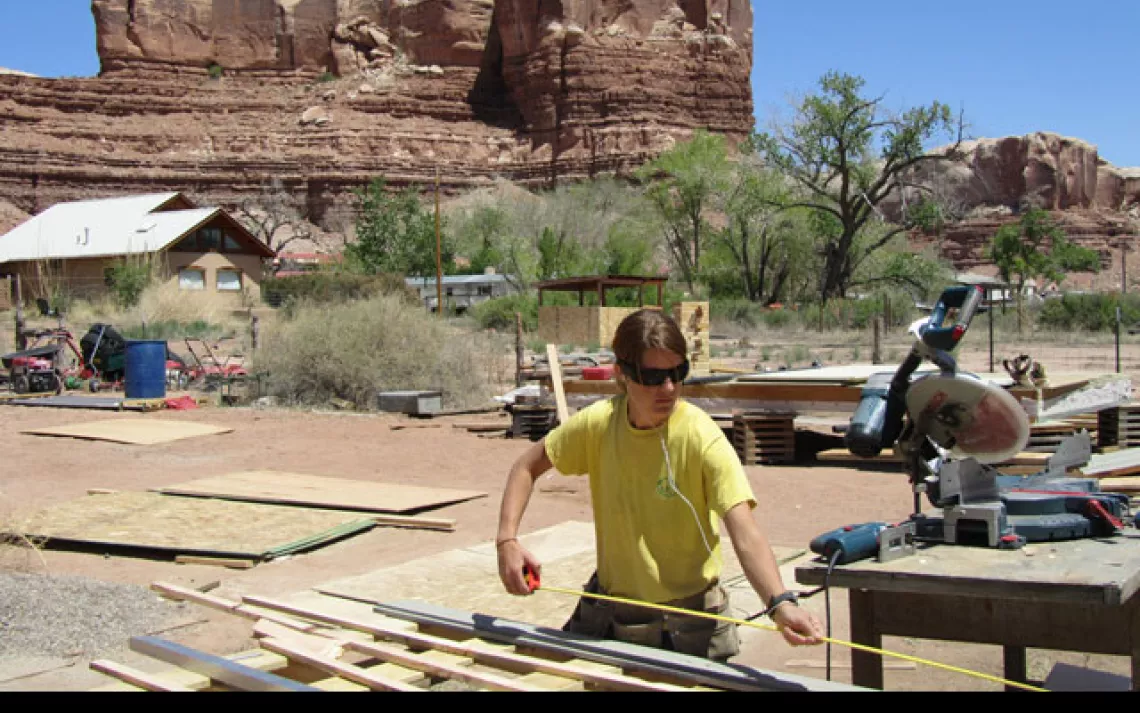
A student measures lumber at the DesignBuildBluff compound in Bluff, Utah.
Building-supply companies donate lumber and other materials. Desert earth and sand become bricks and plaster. The rest, Thompson said, "we just scrounge. It's completely different from regular class and studio work. I've learned more here than I did in four years as an undergrad."
The students spend a semester in Salt Lake City designing the houses and the next semester building them on Louis's five-acre compound in Bluff. The place is part construction site, part commune. It's cluttered with bicycles, trailers, dogs, a shipping container converted into a bunkhouse, and his graceful, century-old sandstone house.
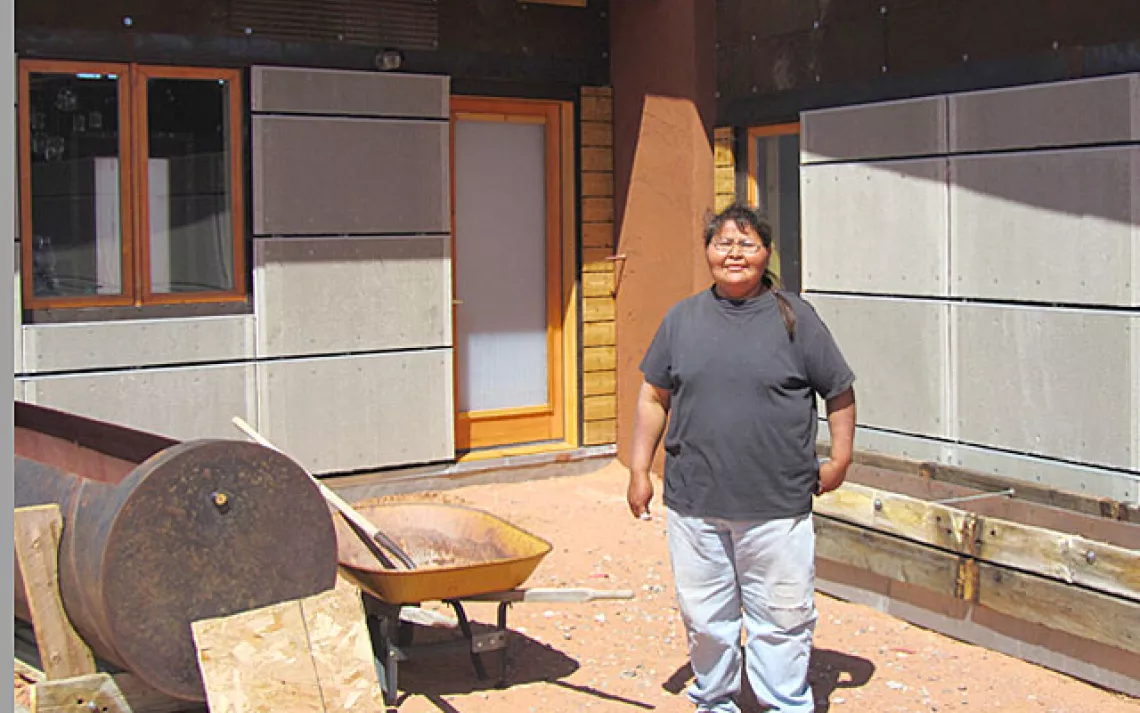
Begay at her back door
By day, the students weld, power-saw, and hammer wood and metal under the open sky, backed by a stunning bank of red-rock cliffs. Louis ambles around, trailing smoke from a fat Dominican cigar, helping to wrangle an aluminum sheet or drill some pilot holes, dispensing guidance as needed. At night, everyone gathers for dinner, swapping stories, showing off injuries.
DesignBuildBluff began accepting students from the University of Colorado last year, and Louis hopes to create a year-round operation that draws participants from other universities. "Last year we built two houses, and we hope to do four this year," he said. "But we'd need to do 50 a year to even put a dent in the need on the reservation."

Twenty-three people built this 1,000-square-foot home and studio for an artist and her family. The siding is recycled barn wood.
The program does have its shortcomings. Louis acknowledges that some Navajo criticize free aid as a form of welfare that discourages residents from improving their lives themselves. Also, Maxine Begay wasn't able to move into her house for seven months, because when the students went home at semester's end, they left a few items unfinished. There was no showerhead or sink tap in the bathroom, the windows lacked latches, and the main door needed a lock. "It's hard to complete a whole house in three months with unskilled labor," conceded Cynthia Bithell, a former student who now works with Louis.
Begay didn't mind. She threw a party for the students before they left, with her uncle's rock band providing the music. "There were a lot of rumors going around about this house, people saying it was built out of trash," she said. "I tell them, 'Come and see it. It's beautiful.'"
 The Magazine of The Sierra Club
The Magazine of The Sierra Club